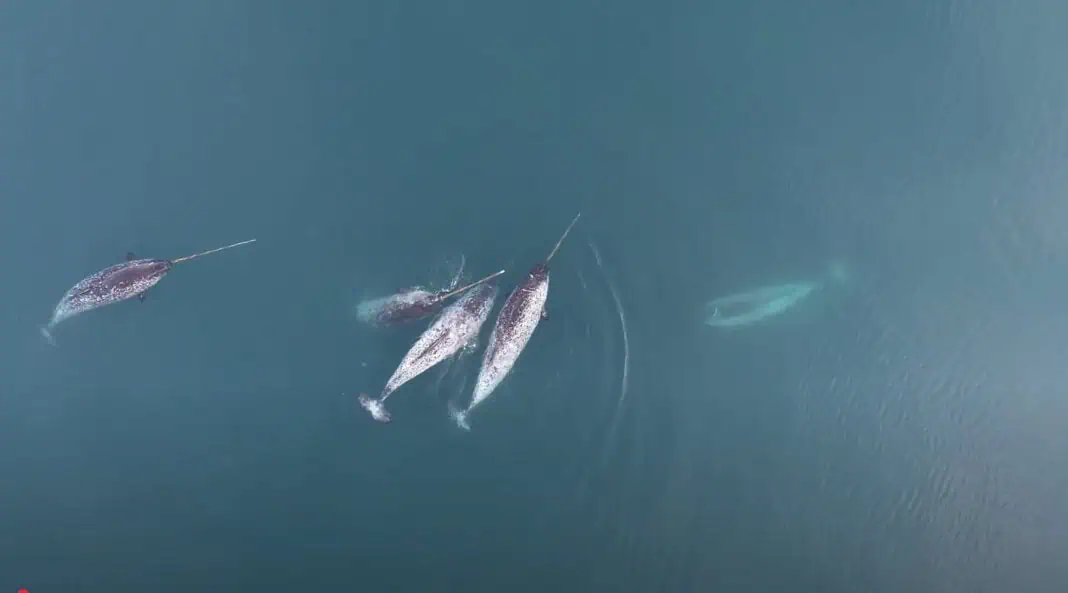Researchers have uncovered the first evidence of narwhals employing their tusks in natural settings to probe, manipulate and influence the behavior of Arctic char (Salvelinus alpinus).
The latest discovery was made using drones to capture the behavior of the narwhals in the wild.
The researchers from Florida Atlantic University’s Harbor Branch Oceanographic Institute and Canada’s Department of Fisheries and Oceans, in collaboration with Inuit communities in Nunavut in Canada’s High Arctic, saw narwhals deliver sufficiently powerful blows with their tusks to stun and possibly kill the fish. The researchers documented 17 distinct behaviors, offering new insights into the interactions between narwhals, their prey and avian competitors.
Commenting on the footage, Greg O’Corry-Crowe, the study’s senior author and research professor at FAU Harbor Branch and a National Geographic Explorer stated:
“Narwhals are known for their ‘tusking’ behavior, where two or more of them simultaneously raise their tusks almost vertically out of the water, crossing them in what may be a ritualistic behavior to assess a potential opponent’s qualities or to display those qualities to potential mates…But now we know that narwhal tusks have other uses, some quite unexpected, including foraging, exploration and play
“Our observations provide clear evidence of narwhals chasing fish and using their tusks to interact directly with the fish and to influence the fish’s behavior… Some of the interactions we saw appeared competitive in nature with one whale blocking or trying to block another whale’s access to the same target fish, while others may have been more subtle, possibly communicative and even affiliative. None appeared overtly aggressive.
To understand how narwhals are being affected by and adapting to the changing Arctic, field studies using innovative, non-invasive tools like drones are essential to observe them in their natural environment without disturbing them. Drones provide a unique, real-time view of their behavior, helping scientists gather crucial data on how narwhals are responding to shifts in ice patterns, prey availability and other environmental changes. Such studies are key to understanding the impact of global warming on these elusive animals.”
While Cortney Watt, study co-author, research scientist and team lead at Fisheries and Oceans Canada, added:
“I have been studying narwhal for over a decade and have always marveled at their tusks…To observe them using their tusks for foraging and play is remarkable. This unique study where we set up a remote field camp and spent time filming narwhal with drones is yielding many interesting insights and is providing a bird’s eye view of their behavior that we have never seen before.”
You can check out some of the drone footage of the narwhals below.

